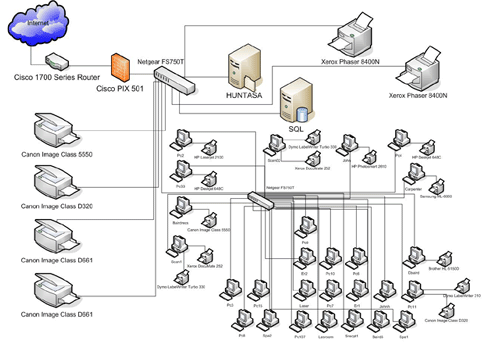| Networks | ||
|
A network consists of a number of computers and peripherals connected together. Advantages of networks...
Disadvantages of networks over standalone computers:
A Local Area Network (LAN) is connected by cable, usually on the same site. A Wide Area Network (WAN) is connected by telephone or satellite links, possibly in different towns, countries... It is important that networks adopt standards - common methods of sending data and consistent data formats. If they did not operate in the same way the workstations would not be able to communicate with each other.
|
||
|
|
||


